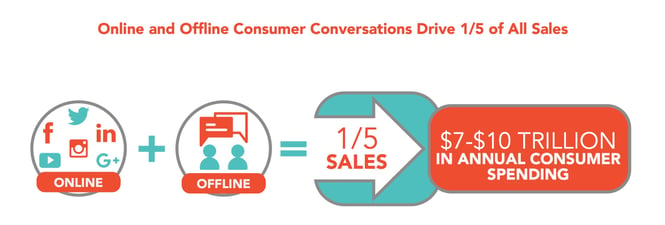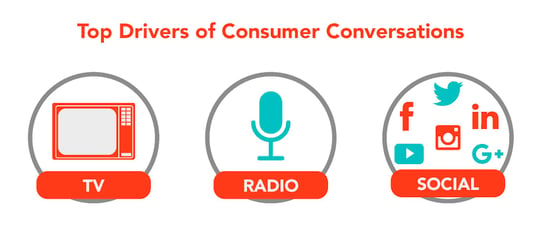Why Marketers Need to Tap the Power of Consumer Conversations and Not Just Social Media
Standing in the aisle of just about any retail store, the American consumer faces a daunting prospect: How to choose from among the multitude of brands? It doesn’t matter if it’s a small purchase, such as beer or a beauty product, or an expensive one, like a car or the latest tech toy. The consumer must make a choice.
It’s easy to see this as an individual decision – perhaps shaped by a television ad or a brand’s Instagram post. U.S. Marketers spend $200 billion in advertising every year based on this assumption. But the reality is more complicated.
Working with the noted marketing sciences professor Dr. Koen Pauwels, Engagement Labs has recently analyzed the impact that conversations in the marketplace have on U.S. consumer sales. Our analysis is the most comprehensive of any that we’re aware of.
The result: We’ve proven that consumer conversations carry significantly more weight than marketers currently believe, and that once understood, they can be managed to even greater effect.
In our study of 170 consumer brands in the United States, we analyzed the link between consumer conversations – both in social media and in real life (word of mouth) - and weekly brand sales data. We then took an even deeper dive into this data for 21 brands, among them Toshiba, Budweiser, Tylenol, and Neutrogena, by including media expenditure data. In this way, we were able to create comprehensive marketing mix models that are predictive of sales.
Our findings have profound implications for marketing strategy.
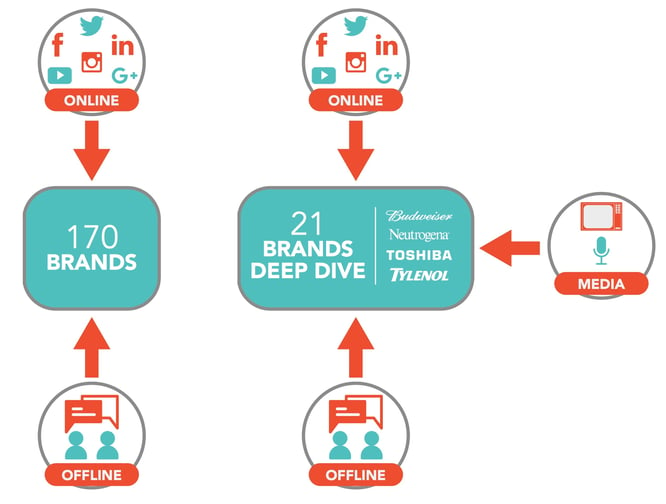
Does Social Performance Really Predict Brand Sales?
Consumer conversations, both in social media and in real life, drive nearly one-fifth of all sales. This translates into between $7 and $10 trillion in annual consumer spending. Even more importantly, offline and online word-of-mouth leads sales by up to 4 weeks. Social performance, then, is a reliable predictor of sales, and a critical data point for marketers as they plan how to stage their marketing for product launches and promotions.
Social Media vs Real-Life Conversations: Which Impacts Sales More?
Marketers devote ever larger portions of their efforts in social media, but real-life conversations matter as much as and often more than those on social media. Face-to-face and voice-to-voice drive half of the impact consumer conversations have on consumer purchases. Social media influences the other half.
Importantly, social media and real-life conversations are very different, and one is a poor predictor of the other. Social media conversations are the visible tip of an iceberg of total conversation, but provides almost no indication of the size and shape of the often hidden offline conversation that exists below the surface.
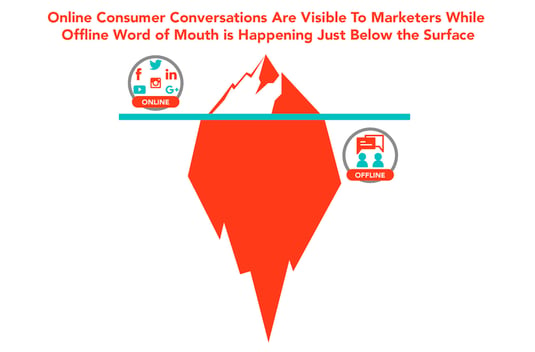
So, while it’s tempting to think a strong marketing performance on social media will create similar results with real-world conversations, marketers must invest in and plan unique marketing strategies for each.
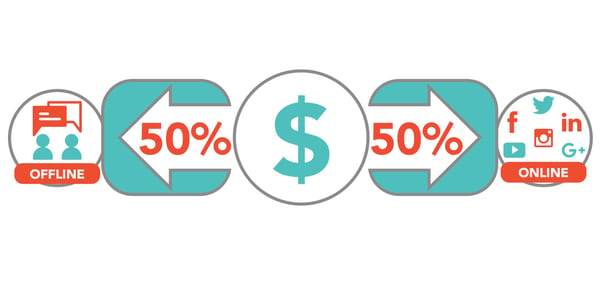 Does Social Influence Amplify Paid Media?
Does Social Influence Amplify Paid Media?
Consumer conversations are a key factor in the success of advertising. A quarter of the impact of advertising on sales “passes through” word of mouth, both online and offline. In other words, advertising prompts or reminds people to talk about brands, and those conversations often lead to purchase. Word-of-mouth does the tough work of persuasion in a way that a paid message cannot.
As expected, our data show the main driver of consumer talk, both offline and online, is TV. But radio is also a surprisingly strong driver of conversations. And while media drive both offline and online conversations, online is more responsive to media efforts. To get more out of their marketing budgets, advertisers must plan for the amplification of advertising through WOM.
Social Influence and the $36 Million Bump in Sales
But what does all this mean in real dollars? With a 10% performance improvement in both real world and social media consumer conversations, the typical brand can realize a 2.6% uplift in sales, and large improvements in profit margins versus “business as usual.”
Put another way, this translates into an average of $36 million in additional annual sales for the brands in our study.
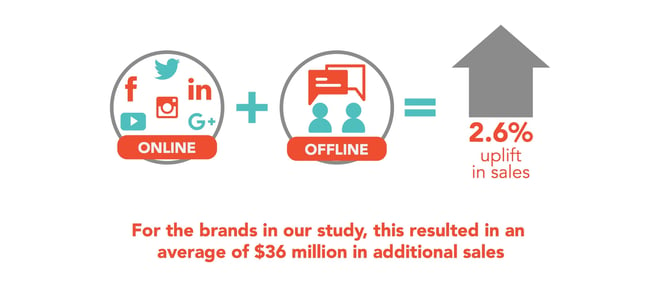
The Risk of Under-Valuing Social Influence
Underestimating or ignoring the impact of social influence will negatively impact a brand’s bottom line. Marketers need to understand that all marketing should be designed to encourage conversations and recommendations, as a way to amplify the impact of marketing expenditures and drive purchases. Consumers are making purchasing decisions while talking with other consumers, whether that’s at the water cooler, at social events, or while and chatting with friends on Twitter, Facebook, and Snapchat.
“By understanding what consumers are saying, both online and offline, and how media buys impact those conversations, marketers can optimize their marketing spend and make their dollars work even harder.”
- Ed Keller, CEO, Engagement Labs.
What can you do to optimize consumer conversations and realize a 2% uplift in sales for your brand? Learn how to improve your TotalSocial® performance and download our Social Engagement Secrets: Lessons for Marketers from Landmark Consumer Conversations Analytics Study.

